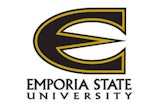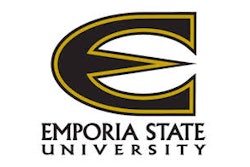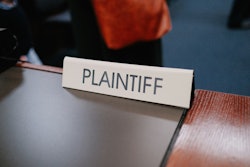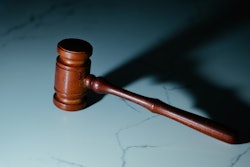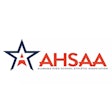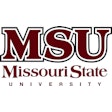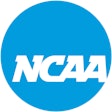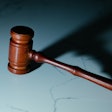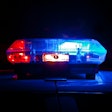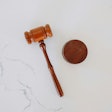
One of the reasons the First Amendment is one of most litigated amendments to the United States Constitution is because of the inherent conflict in the First Amendment’s language concerning religion.
The First Amendment states that “Congress shall make no law respecting an establishment of religion.” In inserting the language, which is known as the Establishment Clause, Thomas Jefferson intended to erect a wall of separation between church and state. On the other hand, the First Amendment also states that “Congress shall make no law … prohibiting the free exercise [of religion].” This clause, known as the Free Exercise Clause, prohibits Congress or the states from making any law interfering with an individual’s right to exercise his or her religious beliefs.
One of the areas the courts have particularly struggled with is the application of the Establishment Clause and the Free Exercise Clause when a public employee attempts to practice his or her personal religion. A good example of this conflict is Kennedy v. Bremerton School District, 2022 U.S. Lexis 3218, which made national headlines earlier this year following a controversial decision by the Supreme Court of the United States.
Prayers, players and the public
Joseph Kennedy was a football coach at Bremerton (Wash.) High School. After games, Kennedy would take a knee at the 50-yard line and pray quietly for approximately 30 seconds.
Initially, Kennedy prayed on his own. However, over time, players began to join him, and the practice grew to include most of the team and sometimes even opposing players. Eventually, Kennedy began incorporating short motivational speeches with his prayer when others were present.
Additionally, Kennedy led the team in a pregame prayer in the locker room.
When the Bremerton School District’s superintendent learned of Kennedy’s pre- and postgame prayers, he sent a letter instructing the coach that any religious activity on his part must be non-demonstrative (i.e., not outwardly discernible as religious activity) to avoid the perception of endorsement. In offering these directives, the district noted the direct tension between the Establishment Clause and the Exercise Clause — a school employee’s right to freely exercise his religion.
To resolve that tension, the district explained, an employee’s free exercise rights must yield as far as necessary to avoid the perception of school endorsement of religious activities.
After receiving the letter, Kennedy abandoned his practice of offering both the pregame locker room prayer and the on-field postgame prayer. However, after a week, Kennedy sent a letter to school officials informing them that, because of his religious beliefs, he felt compelled to offer a postgame personal prayer of thanks at midfield and asked the district to allow him to continue that private religious expression alone.
Instead, the district forbade Kennedy from engaging in any overt actions that could appear to a reasonable observer to be an endorsement of prayer by the district, which paid the coach’s salary — a violation of the Establishment Clause. The district stated that the only option it would offer Kennedy was to allow him to pray after a game in a private location behind closed doors and not observable to students or the public.
When Kennedy continued to offer brief prayers after games he was placed on paid administrative leave and prohibited from participating in any football activities.
In a letter explaining the reasons for this disciplinary action, the superintendent criticized Kennedy for engaging in public religious conduct by offering a prayer following games while still on duty as an assistant coach. Following the season, the district gave Kennedy a poor performance evaluation and advised against rehiring him on the grounds that he failed to follow district policy regarding religious expression and failed to supervise student-athletes after games.
After losing his job, Kennedy sued the Bremerton School District, claiming that its actions violated his First Amendment right of free speech and the Free Exercise Clause. The district court rejected Kennedy’s claims, concluding that because Kennedy held an influential role for student-athletes, any speech he uttered was in his capacity as a government employee and unprotected by the First Amendment.
As for Kennedy’s Free Exercise claim, the district court held that, even if the school district’s policies restricted his religious exercise, it had a compelling interest in prohibiting his postgame prayers, because allowing them would have violated the Establishment Clause. On appeal, the Ninth Circuit Court of Appeals affirmed the district court’s decision.
Legal Hail Mary
Having lost in the lower courts, Kennedy appealed to the Supreme Court of the United States, where the former coach once again argued that his actions — the postgame prayers — were protected under the Free Exercise Clause. The school district continued to argue that its suspension of Kennedy was essential to avoid a violation of the Establishment Clause.
In resolving this clash between the Free Exercise Clause and the Establishment Clause, the Supreme Court noted that the lower courts reasoned Kennedy’s rights had to yield. To support their findings, the lower courts relied on half-century-old precedent — the Supreme Court’s decision in Lemon v. Kurtzman, 403 U.S. 602 (1971), which required courts to examine the purpose, effect and potential entanglement a law or policy has with religion.
The Supreme Court, however, held that it had long ago abandoned Lemon as an endorsement test. In support of abandoning the Lemon test, the Supreme Court explained that Lemon invited chaos in lower courts, led to differing results in materially identical cases, and created a minefield for legislators. In addition, the Supreme Court held that the Establishment Clause does not include anything like a modified heckler’s veto, in which religious activity can be proscribed based on perceptions or discomfort. Therefore, an Establishment Clause violation does not automatically follow whenever a public school or other government entity fails to censor private religious speech. Nor does the clause compel the government to purge from the public sphere anything an objective observer could reasonably infer endorses religion.
Instead of the Lemon test, the Supreme Court ruled that the proper test for the Establishment Clause is for the courts and governments to draw a line between the permissible and the impermissible based on history, faithfully reflecting the understanding of the Founding Fathers. Using this standard, the Supreme Court found that the district court and the Ninth Circuit erred by failing to heed this guidance.
As for the fact that Kennedy’s midfield prayer may have a coercive effect, the Supreme Court found that the only prayer Kennedy sought to continue was the prayer he gave alone. Kennedy, the Supreme Court held, did not seek to direct any prayers toward students or require anyone else to participate. While some people may have been witness to Kennedy exercising his religion, the Supreme Court ruled that learning how to tolerate speech or prayer of all kinds is part of learning how to live in a pluralistic society, a trait of character essential to a tolerant citizenry.
SCOTUS blessings
What can sports administrators take away from the Supreme Court’s Kennedy decision?
First, the Supreme Court in rejecting the Lemon test for analyzing Establishment Clause cases, has stated that states need to have respect for religious expressions, whether those expressions take place in a sanctuary or on a field, and whether they manifest through the spoken word or a bowed head.
Second, the Supreme Court in previous cases allowed the suppression of religious activity if it was thought that students might feel coerced to pray. In relying on these cases, the school district suggested that any visible religious conduct by a teacher or coach should be deemed impermissibly coercive on students. In Kennedy, the Supreme Court rejected the coercion test and found that there was no evidence that students were directly coerced to pray with their coach.
That said, the Supreme Court may be failing to properly judge the power or control coaches have over students. Even without direct coercion, athletes may feel pressure to participate, and coaches may subconsciously award playing time to athletes who do choose to participate in an otherwise voluntary prayer group.
Finally, it is important to note that the Supreme Court based its decision on the fact that the Bremerton School District only disciplined Kennedy after he persisted in praying quietly without his students after three games, not because he was leading postgame student prayers at the 50-yard line. If the school district had disciplined him for leading such postgame prayers, there is a good chance the Court would have found such activities in violation of the Establishment Clause.














